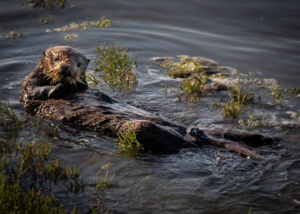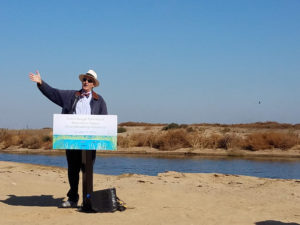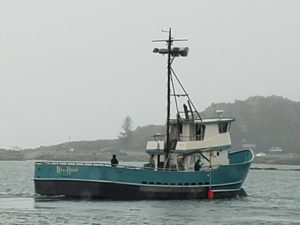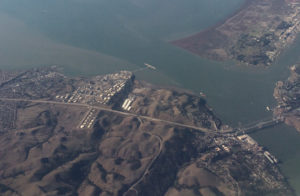This is an op-ed by David Helvarg, the co-chair of the Point Molate Alliance, which opposes the housing plan.
On March 19, in a closed to the public session, the mayor and City Council of Richmond California voted to accept a proposal from SunCal, a major southern California developer, to build an upscale housing tract on the last isolated and undeveloped headland on San Francisco Bay, that is also home waters for its healthiest marine grasses.
Point Molate, a 422-acre headland just north of the Richmond Bridge, has been described as “the most beautiful part of the bay no one’s ever heard of.” In part this is because people tend not to identify low-income urban communities of color, such as Richmond, with world-class natural wonders.
In 2010 the people of Richmond voted 58% to 42% to protect Point Molate from being privatized for a mega-casino resort. But under a year-old legal agreement—now being challenged in court—the city and the failed casino developer will split proceeds from the sale of this natural resource that is presently range managed by mule deer, wild turkey and rare swallowtail butterflies. There have even been indications of a mountain lion feeding on deer in the fenced-off uplands.
Directly offshore from Point Molate lies 50 acres of city-owned eelgrass beds that are considered the healthiest, most unique marine grass community and food web in San Francisco Bay, also the only eelgrass beds visible from shore—linked on their land side to one of the Bay’s last native coastal grassland watersheds where part of the planned housing tract could be built after bulldozing and terracing. Sediment runoff from construction and algal growth linked to pollution from thousands of residents and their cars and storm water, could easily smother and destroy the eelgrass beds.
Selected samples from Point Molate’s eelgrass beds are used for restoration elsewhere in the Bay as part of a penalty payment resulting from one of the area’s other environmental disasters, the Cosco Busan oil spill of 2007.
Point Molate’s eelgrass is home to more leopard sharks, bat rays and sea hares (tiny marine slugs that eat algae) than anywhere else in the Bay. They act as a nursery for juvenile Dungeness crab and various fish species, which is one reason Point Molate is also home to eight pair of nesting ospreys (Richmond’s one other pair of these fish eating raptors nest on an old crane in the port). These marine grasses are also where the Bay’s herring spawn and lay their eggs, one of only a handful of locations.
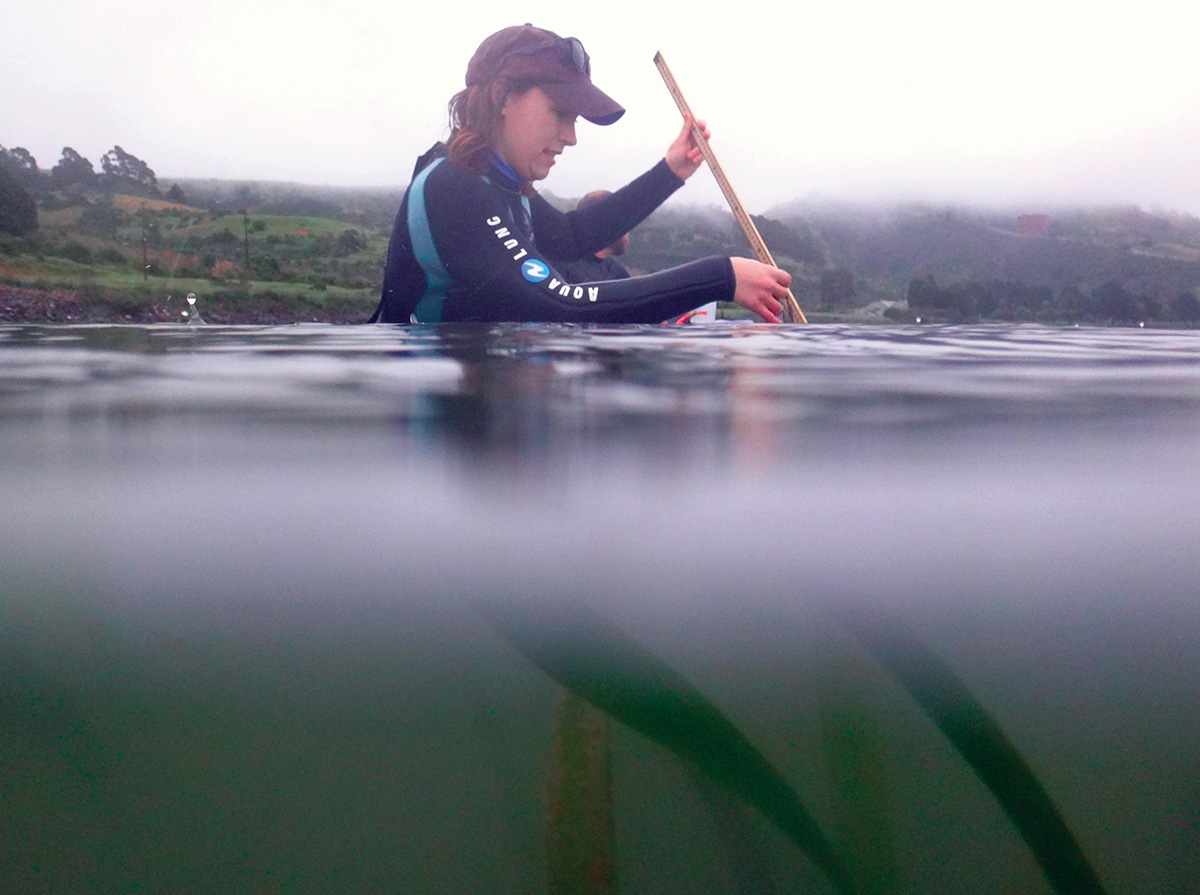
At this time of year you can see vast flocks of diving seabirds, gulls, and pelicans feasting on herring eggs and on the herring themselves along with mobs of marine mammals including dolphins, seals and sea lions. Over the last several weeks these feeding frenzies have been spotted off Point Molate, in Richardson Bay and a few other locations drawing additional flocks of amazed human observers.
A few years ago members of the Point Molate Alliance that opposes the housing tract sponsored a Richmond High School field trip to Point Molate where students testing water quality at the shore were surprised as an osprey swooped down, grabbed a large fish out of the water with its talons and flew off, setting off a cheer of amazement.
The Bay’s commercial herring fleet is carefully regulated to balance its take with that of feeding wildlife while also having to deal with the growing impact of altered ocean conditions resulting from climate change.
But it’s the Dungeness crabs whose life cycle is dependent on eelgrass that are the most valuable fishery in Northern California. “The restoration of our estuary and particularly eelgrass is tied to the recovery of Dungeness crab, which is why we can’t afford to lose any of this important habitat, particularly in the Bay,” says Noah Oppenheim, executive director of the Pacific Coast Federation of Fishermen’s Associations (PCFFA) the largest commercial fishing group in the state and one of many groups to have signed a letter of opposition to the planned housing tract.
In terms of sea level rise Point Molate has been identified as the one place in the Bay likely to see eelgrass beds migrate upslope due to the natural or minimally developed shoreline, unless a housing development is built there of course.
Because of its pristine condition, Point Molate’s eelgrass is also the site of ongoing scientific studies including by the Smithsonian Institution, as well as a global network of scientists funded by the National Science Foundation studying 25 locations around the world to understand the role of sea grasses in carbon sequestration, a way to mitigate the impacts of climate change. A number of scientific papers have been published or will soon be published based on work at Point Molate.
“We study Point Molate because it’s just the best example of what eelgrass beds can be in San Francisco Bay. It’s what we aim for when we do restoration elsewhere, it’s that pristine,” says Dr. Katharyn Boyer, a salt marsh and seagrass biologist and director of the Restoration Ecology Lab at San Francisco State University’s Estuary & Ocean Science Center in Tiburon.
Asked what impact a major housing development at Point Molate would have on the eelgrass beds, she responded, “it would pose a grave risk to one of the basic foundations of the food web in the Bay.”
Runoff pollution from housing construction and finished structures that house five to ten thousand people by the water with their cars and lawn chemicals, uncollected pet waste and random garbage running through storm drains is what concerns scientists and naturalists given the multiple studies in areas such as Chesapeake Bay and Tampa Bay on the east coast that have historically seen thousands of acres of marine grasses killed off by shoreside development (and more recent recoveries thanks to concerted conservation efforts)
Also of concern would be limited access in case of an emergency. Point Molate’s two lane access road ends at the eastern end of the Richmond San Rafael bridge that is often congested or jammed, most recently by a gravel spill on March 14. It is also adjacent to a more than century old Chevron oil refinery just over the ridgeline that had its most recent flaring “incident” on Sunday March 17 that sent a column of smoke over Point Molate.
At last fall’s Climate Action Summit in San Francisco famed anthropologist Jane Goodall reminded thousands of attendees that when it comes to fossil fuel impacts, “the forgotten climate solution is also to protect nature.”
In Richmond, where the local is global, a broad cross section of civic groups and individuals have worked on a community plan to protect Point Molate as a world-class park and recreational destination in ways that would create jobs, benefit the economy, the environment and equity while moving housing downtown where it’s needed and where transportation and infrastructure already exist.
But the mayor and his supporters have turned a deaf ear to public concerns over safety, affordability, liability, and certainly the environment. When Point Molate was once described as a unique natural treasure of more than 400 acres Mayor Tom Butt countered that this wasn’t a real figure because “half of it is underwater.”


